Today we talk about the scariest word in the world: EXPOSITION
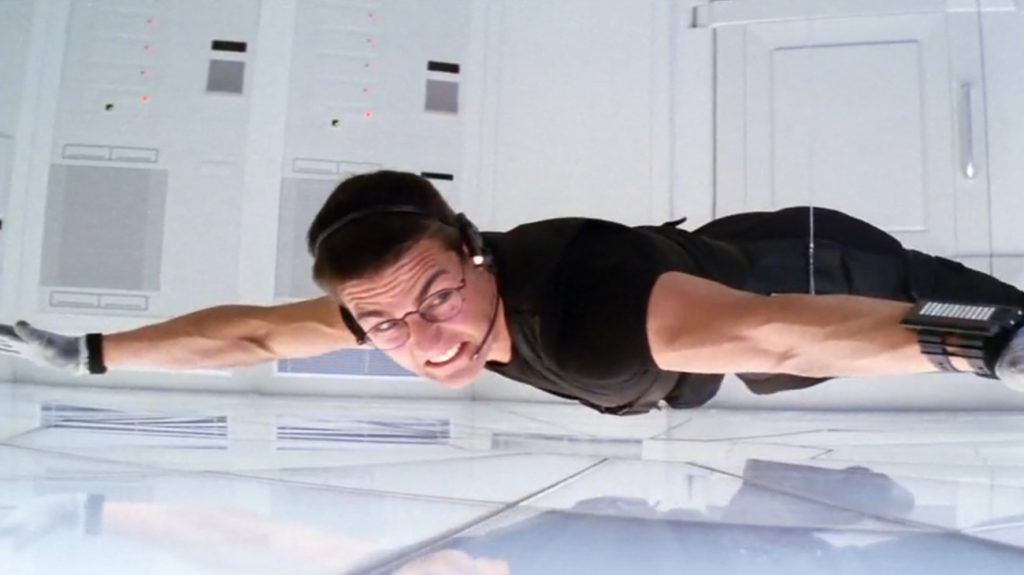
Day 1: Writing a Teaser
Day 2: Introducing Your Hero
Day 3: Setting up Your Hero’s Life
Day 8: Keeping Your Scenes Entertaining
Day 9: The Inciting Incident
Day 10: Refusal of the Call
I don’t talk about exposition nearly as much as I used to. The reason for that is, I find exposition to be very “Screenwriting 101.” It’s one of those things you obsess over as a beginner. And everyone is bad at it for their first five screenplays. But then, a lot like loglines, it’s one of those things where, if you stick around long enough, you figure it out, you know what I mean?
But today we’re going to forgo my reluctance because the first act is all about SETTING UP THE REST OF YOUR MOVIE and that means using a lot of exposition. For those of you new to the medium, exposition is defined as “relevant information about the characters and plot.” If you’re writing a heist movie, like Mission Impossible, all the scenes where the Mission Impossible team discuss how they’re going to break into the computer room – that’s exposition.
Or, if your character needs to pilot a jet in act 3 but there’s nowhere else in the script to fit in any jet-flying scenes, you’ll need some dialogue somewhere that lets your reader know your hero can do this. Han Solo: “And who’s going to fly it kid, you?” Luke Skywalker: “You bet I could! I’m not such a bad pilot myself.” That’s exposition.
You also may need to tell us about where your hero came from and what their current internal situation is, if they’ve had any traumatic experiences recently, like a death in the family, or if they have a drug problem, like Rue in Euphoria. This all falls under the umbrella of exposition. The good news is, you don’t always have to use dialogue to deliver exposition. You can show-don’t-tell. For example, if your hero is an alcoholic, show them drinking a lot in some non-cliche way and we’ll get that they’re an alcoholic.
The reason exposition is such a major focus in the first act is because when a reader comes into a story, they know nothing. You may know everything about your hero and the plot. But the reader doesn’t yet. So everything you tell them is going to be new information. Which means you’re going to have to explain some things. If you introduce a new character, you’re going to have to tell us who they are, what they do, who else they know in the script, how they know them, how they’re relevant to the plot. All of those things require exposition.
Likewise, when the inciting incident occurs in your script, your plot will form. And when your plot forms, you have to disseminate how it forms to the reader. When the Avengers learn that Thanos is going after all the Infinity Stones to snap half of life out of existence, they need to figure out how to stop him. That conversation is all exposition.
One of the things that’s critical to remember is that the story you choose will have a singificant effect on how much exposition you’ll write. If you’re writing a well-known template where the audience knows the rules already and you keep it simple, like, say, “Friends with Benefits,” you’ll have barely any exposition to write. But if you’re writing Lord of the Rings, you’re going to have to explain Middle Earth, 30 characters, what “the ring” is, why it needs to be destroyed, the plan for destroying it, who’s going to try and stop you, all the rules of this world, how the magic works — the amount of exposition is endless.
Another example of a heavy-exposition concept would be Moneyball. You have to explain the rules of baseball. What a general manager does. Who our general manager is. What his specific circumstances are (why is it that his team, the Oakland A’s, is so different from all the other teams in the league?). You have to explain the concept of moneyball (a complicated breakdown of players and stats and how it’s not about flashy stars but rather who gets on base the most). Anybody who’s written one of these scripts will tell you: it’s no picnic.
That’s something you need to take into consideration when you come up with an idea – is how much exposition you’ll be tasked with writing. The more plot, the more characters, and the more world-building there is in your idea, the more exposition-heavy your first act will be.
Okay, sure, we get it, Carson. Exposition is hard. What do we do about it?
What most writers do is take the path of least resistance. They lazily insert the exposition into the first act in a “workmanlike” way, taking the approach of, “Just get it out of the way.” I’m going to anger some readers here, but Christopher Nolan has become famous for this. Between Inception, Interstellar, and Tenet, the man has made an art out of long lazy expository scenes that set up his plot (and world). He didn’t used to do this, by the way. Memento deals with exposition quite elegantly.
The strategy for exposition should be the opposite of this. It should be: Make it as entertaining as you can.
Every time you’re faced with an exposition-heavy scene, ask yourself, “How can I make this as entertaining as possible?” That doesn’t mean you have to stick your lead characters in a car chase and have them dole out important plot points while they’re trying to catch the bad guys (although that’s an option). It just means make the exposition enjoyable instead of boring.
Let’s take Moneyball as an example. Because it has a tall task. It has to explain how the process of moneyball works, which involves the current state of baseball and how moneyball is different and stats and players and blah blah blah. Before I show you how they tackled this, I want you to imagine how you’d write this exposition scene. Because I can tell you how most people would write it.
Billy Beane (Brad Pitt) would be in another GM’s office, and the GM (general manager) would say something like, “Hey, have you heard of this new thing people are doing? They’re using computers to track players now and they’re learning that all the previous stats don’t matter as much as they used to and here’s the stats they do care about, let me list them for you so you understand this new concept of moneyball.” Somebody telling somebody else exposition, unprompted, is one of the worst ways to deliver exposition.
Instead, screenwriting masters Aaron Sorkin and Steve Zallian craft a mystery in regards to moneyball. Billy Beane is in a fellow General Manger’s office where he tries to get the GM to trade him a relatively unknown player, thinking it will be easy. The GM agrees at first, until some nerdy assistant in the corner shakes his head ‘no,’ and the GM goes back on the agreement, telling Billy he can’t trade him. It’s all rather hush-hush and mysterious.
WE’VE GOT OURSELVES A MYSTERY! That’s a great place to be when you need to dole out exposition. Because the reader is curious. “Hmm, what’s going on here?” they think. “I want to know what all the secrecy is about.”
So Billy hunts this nerdy assistant down and says, “Why didn’t you trade me that player?” What I’m about to tell you next is one of the top 5 rules when dealing with exposition: THE ASSISTANT DOESN’T WANT TO TELL HIM. There’s something about a character not wanting to give out the releveant information that cloaks the exposition, making it feel like it’s not exposition. So, here, the assistant can’t tell him because it’s trade secrets. But Billy keeps pushing and pushing until the assistant can’t hold it in anymore. And that’s when he explains how moneyball works.
Never once does the scene feel like exposition because, a) there’s a mystery involved, and b) the assistant only gives out the information reluctantly. Here’s the office scene…
And here’s the big exposition scene that follows…
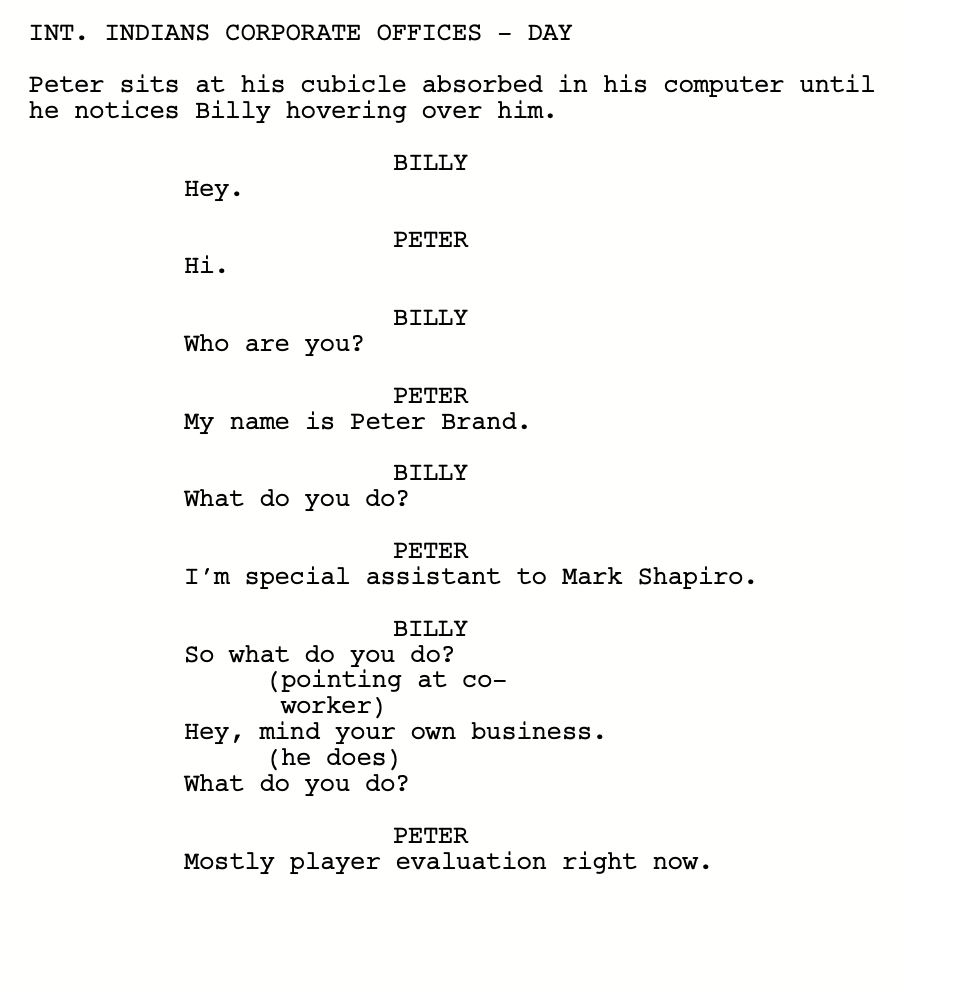
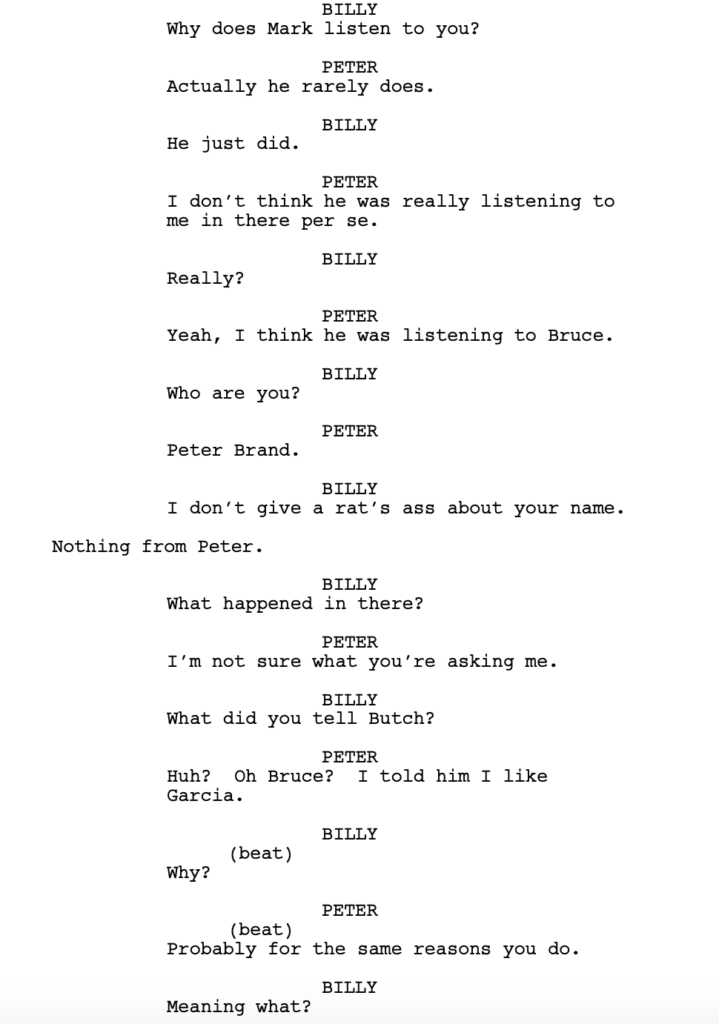
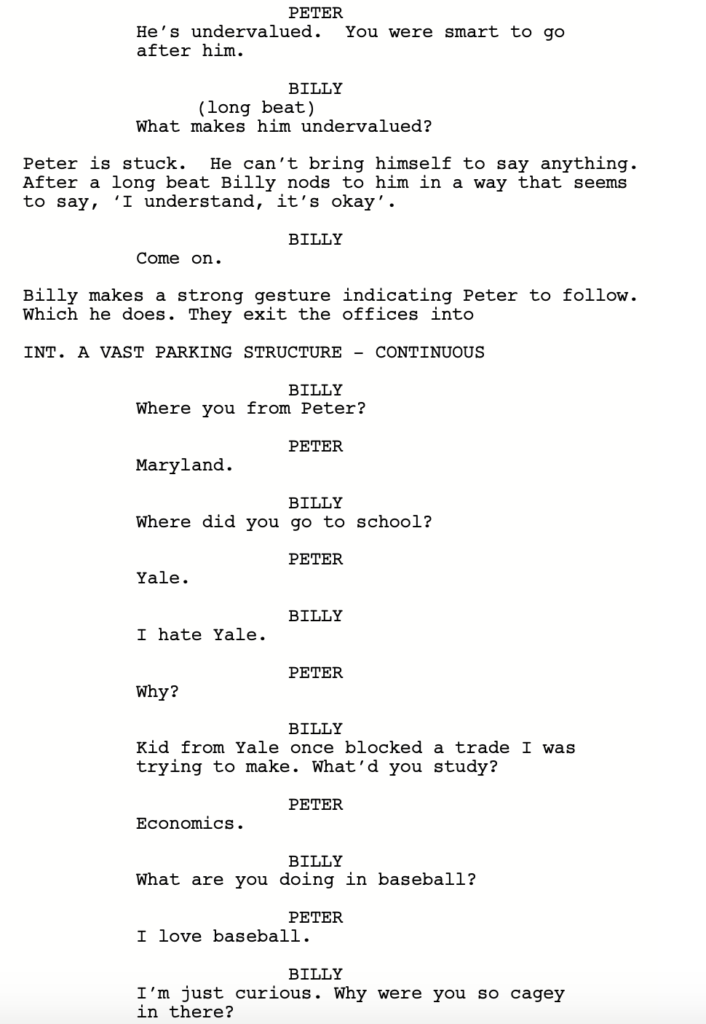
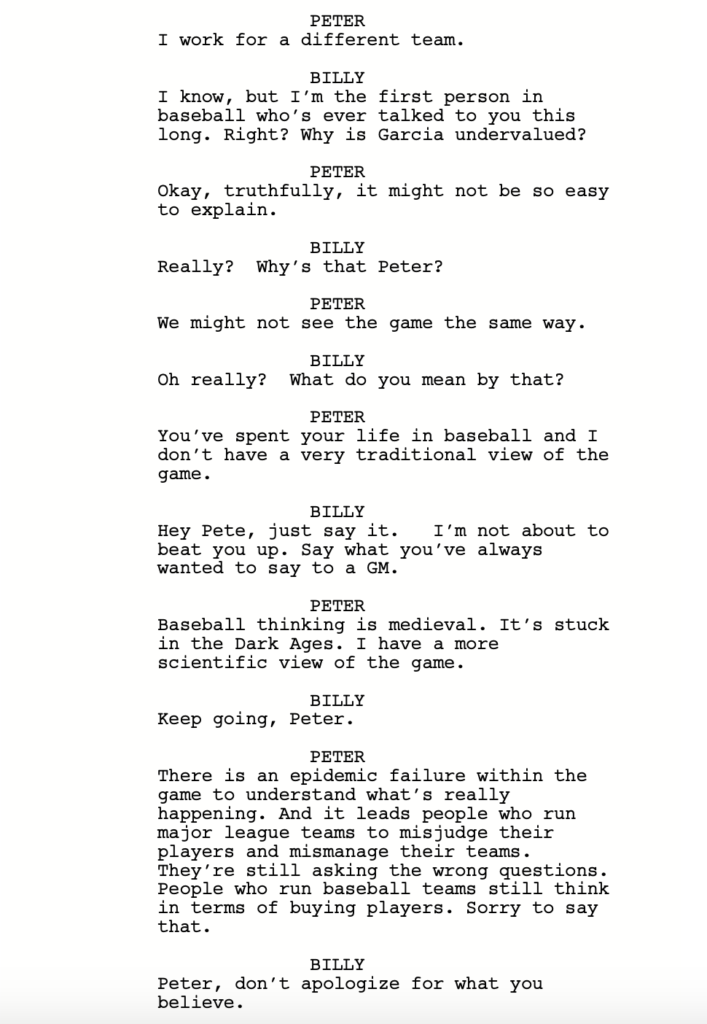
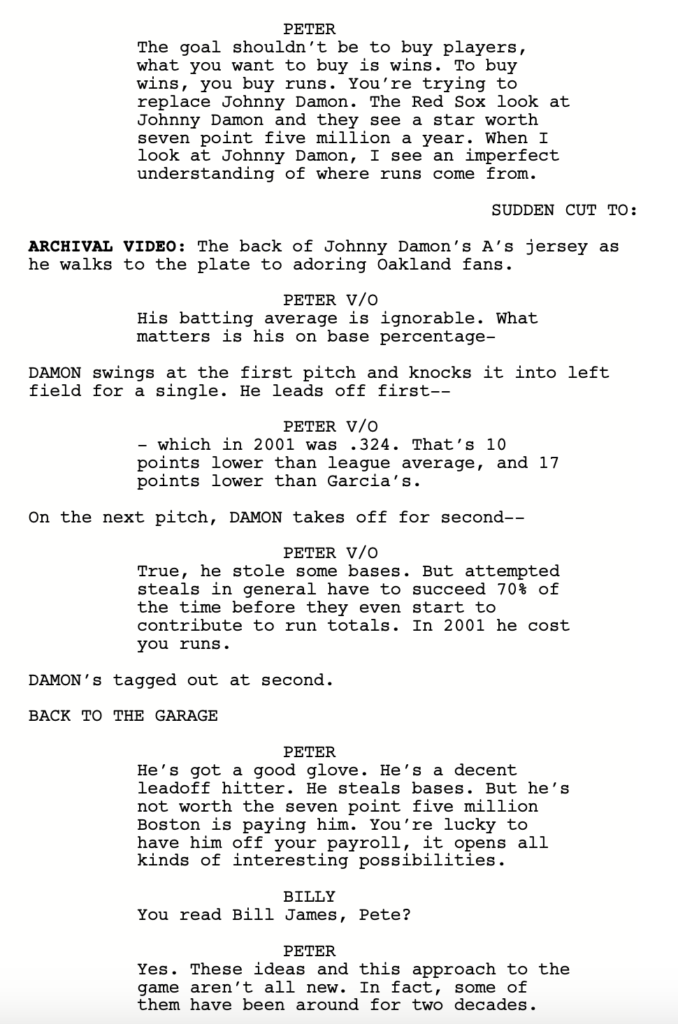
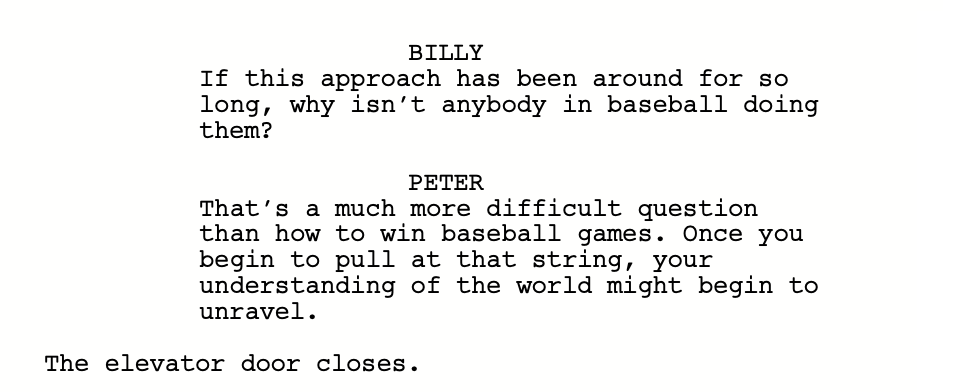
Note the clever twist in the middle of the scene, where he takes him to a more private place. This conveys to the reader that the information he’s about to tell him is secret and valuable. It also adds a little suspense. That’s good writing! I understand that this is a fairly specific example because it’s a sports drama, which not many people are writing. But the approach Steve Zallian uses is the same one you should be using. Which is: “I’ve got a bunch of potentially boring stuff I have to convey to the reader. How do I do so in a dramatically entertaining way?”
More recently, Spider-Man No Way Home dealt with this issue. The film needed to open up the multiverse, a complex concept that needed a lot of explanation, while also explaining that, by doing so, nobody would remember Peter Parker was Spider-Man. I can’t imagine having to come up with a scene that required as much exposition as this one. But the writers did exactly what they were supposed to do: Figure out how to convey this information in an entertaining matter. They do so by having Peter ask Dr. Strange all these questions about what’s going on and how this will affect him WHILE DR. STRANGE IS IN THE PROCESS of executing his spell. Conveying exposition during an exciting moment is a time-tested way to tackle the exposition problem.
As I pointed out in my review of the film, though, the scene didn’t work. It was too jumbled and tried to do too many things at once. But the spirit of what the writers did was correct. They’re giving the viewer exposition through a dramatically entertaining scenario.
In summary, whenever you write a first act, most of your scenes will contain exposition. If it’s a little exposition – try to contain it to as few lines as possible. If it’s a lot of exposition, try to come up with a scene that delivers that exposition in a fun way. Feel free to share your own exposition tricks in the comments! And keep writing those pages!
Next First Act Post: Thursday, March 17
Pages to write until next post: 4
Pages you should have completed by Thursday: 24

